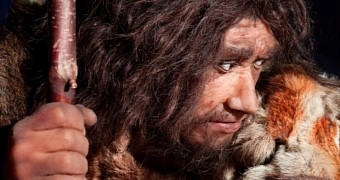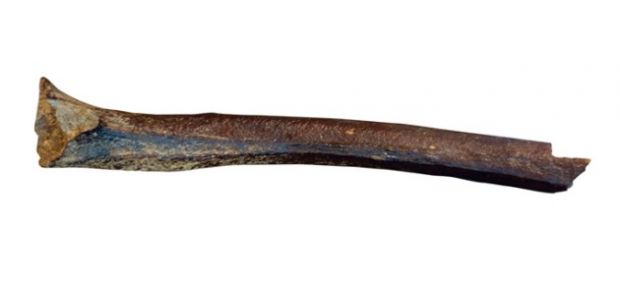By the looks of it, humans and Neanderthals first warmed up to each other and started making babies about 50,000 years ago, maybe 60,000 tops. Or so argues a paper published in today's issue of the journal Nature.
As detailed by the scientists who authored this paper, the claim that Neanderthals and the ancestors of modern humans first interbred some 50,000 to 60,000 years ago is based on information collected while analyzing DNA samples recovered from an ancient bone.
The bone in question, a photo of which is available below, is said to be part of the femur of a man who lived in present-day Siberia roughly 45,000 years back. The bone was discovered in 2008 on the left bank of a local river, and specialists have been studying it ever since.
Sequencing the oldest-known human genome
What's interesting about this male femur fragment discovered in Siberia is that the human DNA extracted from it is the oldest to have until now been sequenced by scientists, Live Science informs.
Hence, researchers were able to use it to paint a more accurate picture of what our ancestors were up to thousands of years ago and to gain a better understanding of their romance with Neanderthals, said to have gone extinct 40,000 years back.
Long story short, this ancient DNA revealed that the ancestors of modern humans did not migrate into Eurasia solely via a southern, coastal route that first took them to Oceania and later to mainland Asia. On the contrary, they appeared in present-day Siberia as early as 45,000 years ago.
The love affair between early humans and Neanderthals
The scientists behind this research project explain that 2% of the DNA of the man whose femur they found in Siberia is of Neanderthal origin. Besides, they say that the man's ancestors acquired Neanderthal genomes some 7,000 to 13,000 years before this hunter-gatherer was born.
This means that Neanderthals and our ancestors first hooked up and got busy making babies approximately 50,000 to 60,000 years ago. This is in accordance with previous studies stating that such interbreeding events happened 37,000 to 86,000 years ago.
As explained in the journal Nature, Neanderthals populated Europe and Asia. The ancestors of modern humans came across them, and by the looks of it, took quite a fancy to them, when they left Africa and started populating other corners of the world.
How this ancient romance affects us
This might come as a bit of a shock to some people, but as it turns out, pretty much everybody living outside Africa is related to Neanderthals. More precisely, scientists say that some 1.5% to 2.1% of the DNA of folks who are not Africans is of Neanderthal origin.
This is precisely because, when they began spreading outside Africa, the ancestors of modern humans saw fit to start making babies with the Neanderthals they chanced to cross paths with, and continued to have such affairs for quite a while.
Interestingly enough, specialists suspect that the DNA they acquired from Neanderthals helped ancestors' offspring have an easier time coping with the new environment they were forced to live in. This could be why people living outside Africa still carry DNA of Neanderthal origin.
Researchers plan to investigate this hypothesis in further detail and hope to soon gain a better understanding of why our genome looks the way it does.
“We are really interested in what functional implications the Neanderthal DNA in present-day people might have had in the adaptation of present-day humans to their new environments,” researcher Janet Kelso explained in an interview.

 14 DAY TRIAL //
14 DAY TRIAL // 

